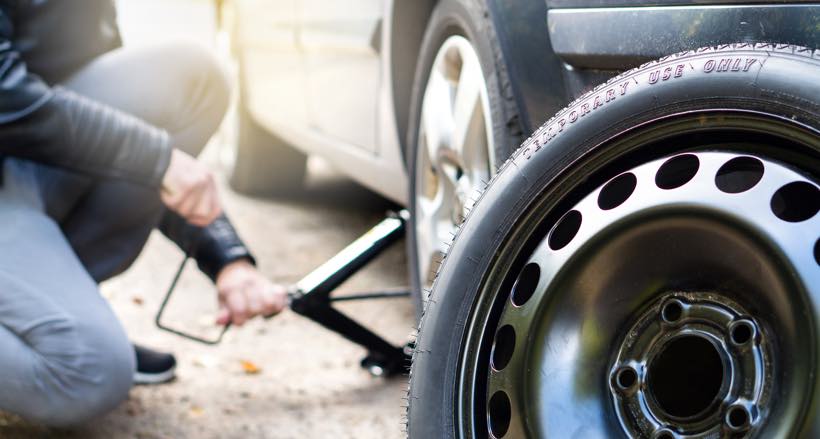Education & Help
How to change a flat tire
2 min read time

Here’s what you need to do to get safely back on the road.
If you don't have your cellphone handy to call a tow truck or aren't able to wait, you’ll want to consult your vehicle owner's manual before attempting to change it yourself. There you’ll find details specific to your vehicle, such as the location of the spare and jack kit. And be aware of your surroundings; find a safe, level place away from traffic. If you do not feel safe, never hesitate to call the local police for help.
- Remove the spare tire and jack from your vehicle. Check your spare’s inflation level. If its pressure is too low, you'll need to find a place to inflate it or call a tow truck.
- Your jack kit should include a tire iron for removing the lug nuts. Use the iron to loosen the lug nuts on the flat tire while the vehicle is still on the ground, but don't remove the nuts completely just yet.
- Block the other tires to make sure the vehicle doesn't roll.
- Raise the corner with the flat tire high enough for the flat to clear the ground; don’t raise the vehicle any higher than you need to.
- Finish removing the lug nuts from the flat tire and pull it off.
- Put the spare tire on the vehicle.
- Replace the lug nuts, but don't tighten them completely just yet.
- Lower the vehicle by turning the jack in reverse.
- Finish tightening the lug nuts. After a few turns, rotate clockwise to tighten the next lug nut. Repeat this process until each lug nut is securely in place.
- Stop by your local Quick Lane® Tire & Auto Center for a replacement tire as soon as you can. If you have to use highways to get there, keep your vehicle under 55 mph and use your hazard lights. Most spare tires are not designed to handle high speeds for long periods of time.
Source: nhtsa.gov
Selected Store